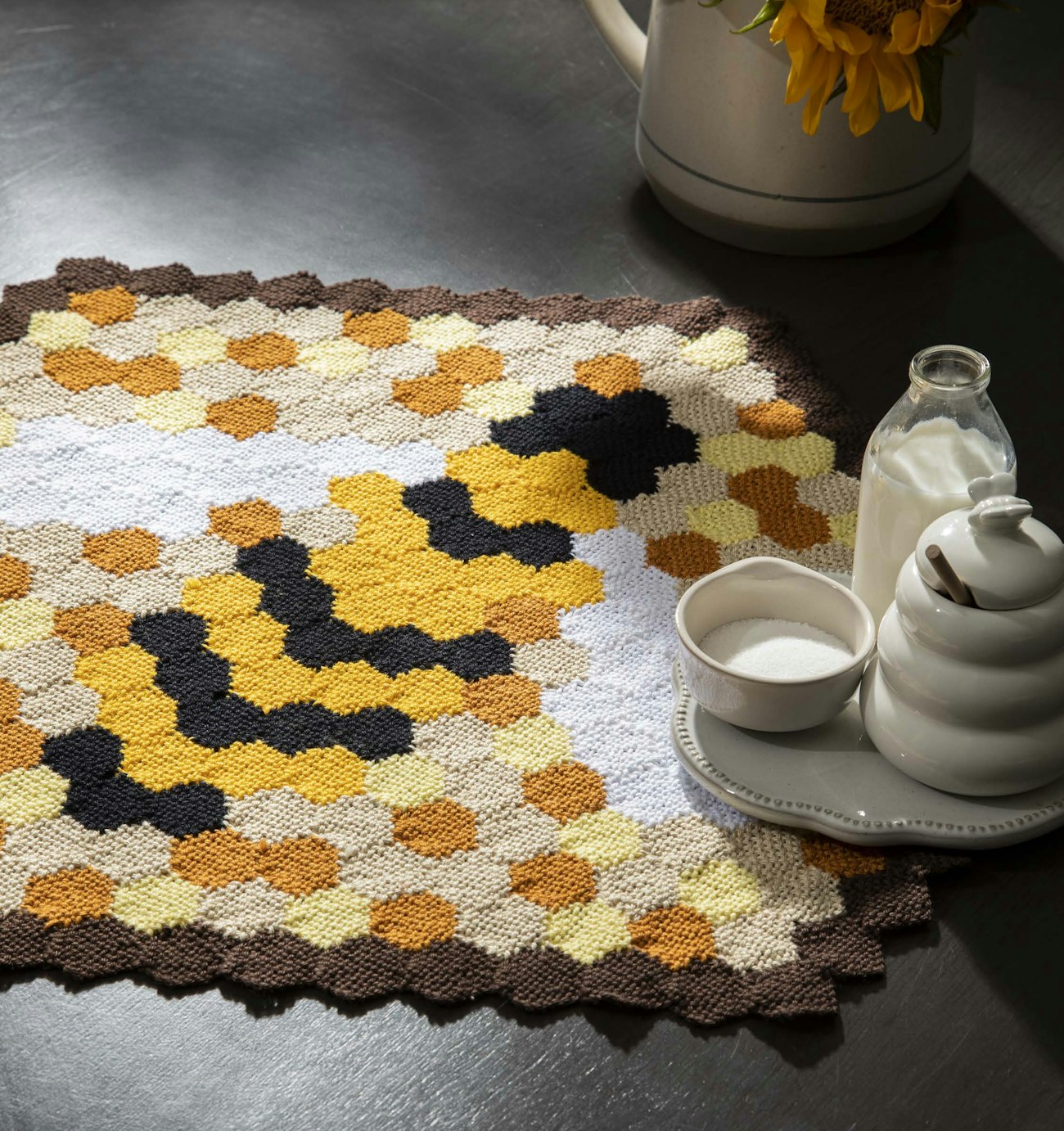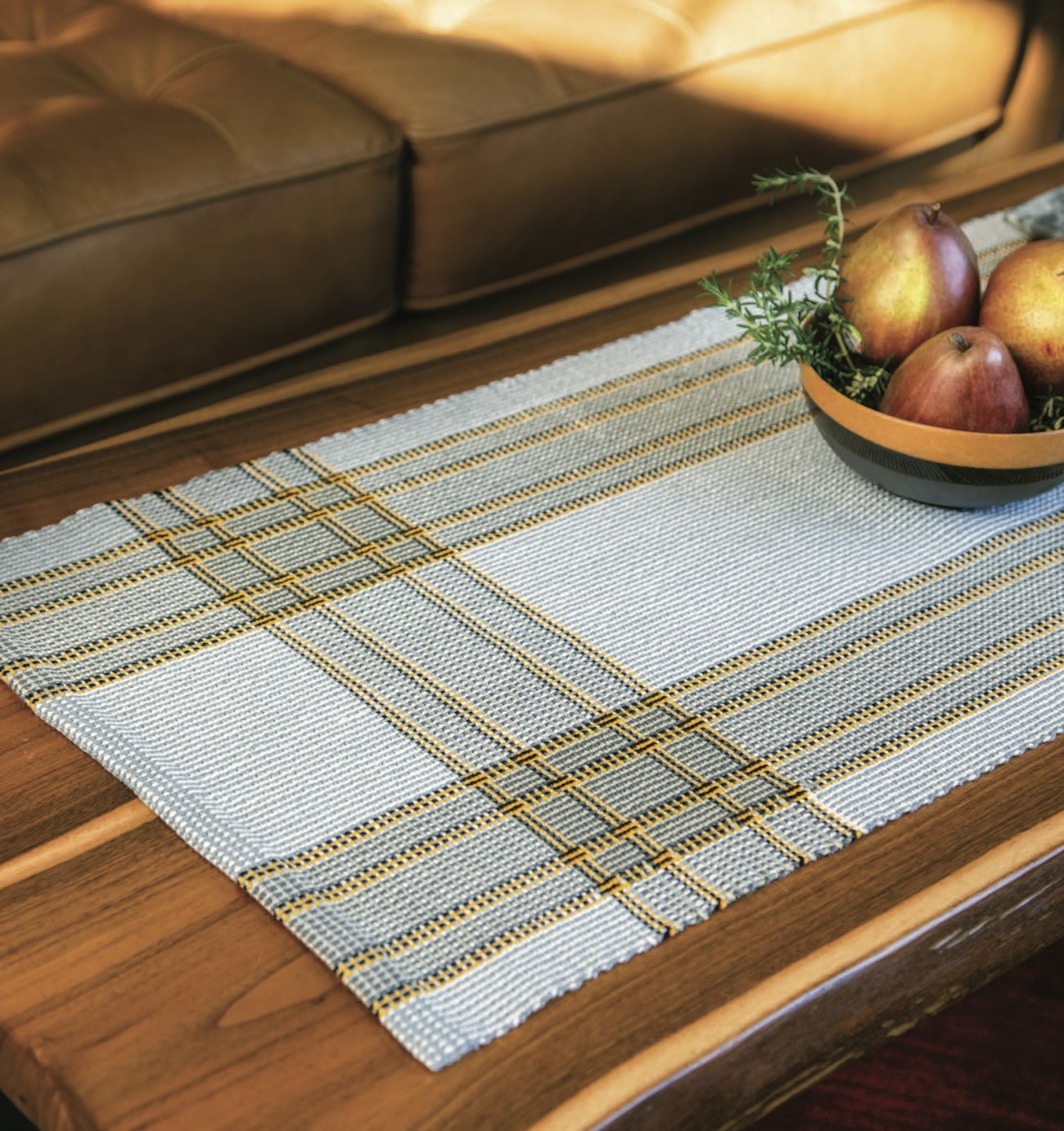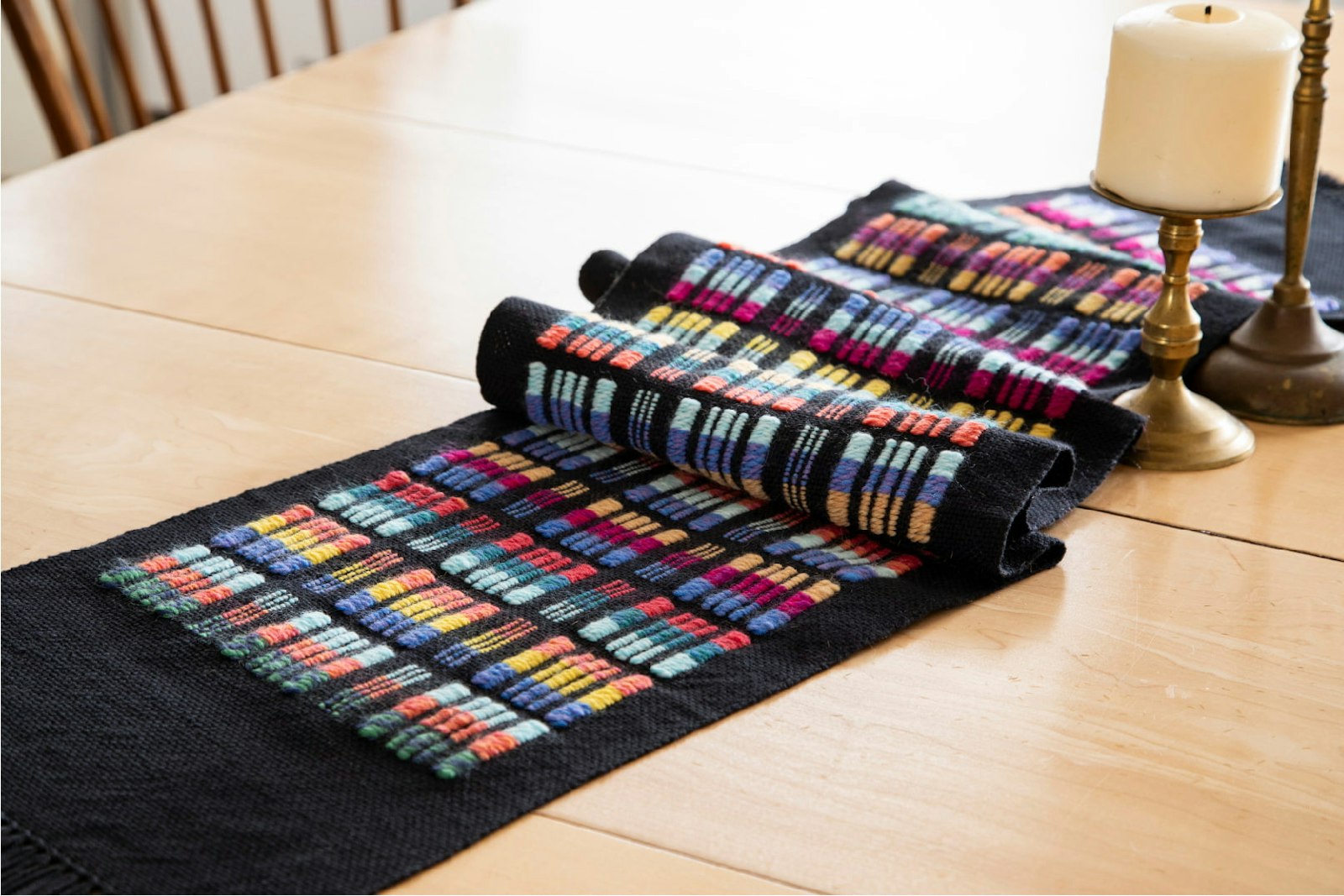Let’s talk table runners. This perennially popular project type for weavers can be found in a variety of shapes and sizes—but how do you figure out which runner project is right for you?
Technically there are guidelines about what size of runner should go on what size table, depending on whether you want a centerpiece runner or one that has overhang. While these guidelines can help you figure out sizing, these are still just guidelines, not laws set in stone. The runner that’s best for you is the one that works for you.
 Gabi van Tassell's Queen Bee Table Topper would make a sweet addition to any table.
Gabi van Tassell's Queen Bee Table Topper would make a sweet addition to any table.
First, you need to decide what kind of runner you want to make: a standard runner or a “table topper.” The primary difference is that standard runners are rectangles and table toppers come in a variety of shapes and sizes. (Table toppers are probably more related to table doilies than runners, but we categorize them as runners in Little Looms.)
Size Matters
If you’re going to make a traditional rectangular runner, you’ll need to decide whether you want overhang or for the runner to float in the middle of the table. When making this decision, think about how people will sit around the table—would having overhang mean somebody would have runner in their lap? Then you need to think about size—not just the size of your table right now, but if your table has leaves that you use for special occasions, what’s the size of your table at its longest?
 The Snowy Owl Table Runner by Jenny Sennott cam be easily sized up or down to better fit your table.
The Snowy Owl Table Runner by Jenny Sennott cam be easily sized up or down to better fit your table.
The guideline for runners says if your runner sits in the middle of your table, it should be about two-thirds of the size of your table, and if you’re weaving one with overhang, it should have about 12"–18" of overhang. These measurement guidelines may or may not work for you depending on whether you use placemats on your table, how high your chairs are with the table, and whether you want a runner that will work with your leaves both in and out. I recommend making a muslin.
A muslin is a mock-up made with inexpensive fabric. Typically, muslins are used for sewing projects—especially clothing—to help make sure your item is properly sized before you sew with your nice fabric. Similarly, a muslin for a runner will help you figure out what size works best on your table—both length and width—before you start weaving. Fortunately, most, if not all, the standard runners we’ve printed in Easy Weaving with Little Looms can be adjusted to fit your table.
Table Toppers
Now, table toppers are a completely different breed. They can be any shape or size and are part art piece, part practical table item. The main consideration for these is whether you’ll use them with placemats and, if so, whether the placemats will touch the table topper. Unlike traditional runners, table toppers don’t always size up or down nicely, so keep that in mind when choosing a project.
Location! Location! Location!
Yes, they’re called table runners and table toppers, but that doesn’t mean you’re limited to using them on your dining-room table. Runners look equally fabulous on coffee tables, buffets, credenzas, dressers, and nightstands. I bet you could even use one on the back of an upholstered chair to act as a sort of antimacassar. Just be aware: once you start looking around your house for new places to put weaving, it’s hard to stop.
Want some ideas for beautiful runners and table toppers you can weave up on your little loom? All Access Subscribers can click the links below to immediately download a PDF for each of the three projects shown above. If any of these projects aren’t for you, make sure to check out our Little Looms Library where you can filter your search by not just project and loom type but also by heddle width, sett, and pin loom shape(s) required.
Happy Weaving!
Christina
Gothic Table Runner by Jennifer Kwong
Queen Bee Table Topper by Gabi van Tassell
Snowy Owl Table Runner by Jennifer Sennett

